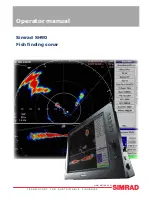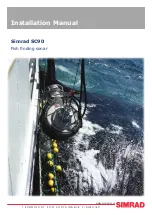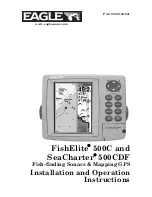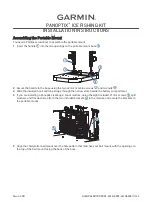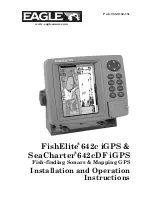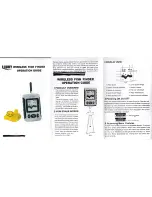
34
Before we explain the other pages, there are some general things you
should know about the operation of the FishFinder.
Choosing a Frequency
We said that the FishFinder uses sound waves to “see” through the water
under the boat. The “frequency” is a measure of how fast the sound
waves change or “vibrate.” The FishFinder uses sound waves with two
different frequencies – 50 kHz and 200 kHz. Raymarine uses these two
frequencies because each is better for a particular purpose:
50 kHz frequency
•
Scans a wide area
•
Penetrates water well, good for deep water
200 kHz frequency
•
Scans a narrower area, but produces a more detailed view
•
Good for seeing fish near the bottom or fish close together
•
Better for use in very shallow water
“Dual” frequency (both 50 kHz and 200 kHz at once)
•
Has the advantages of both frequencies
•
Good depth penetration
•
Good detail in display
•
Using the “Dual 50 kHz” setting, the display is produced using the
signal from the 50 kHz beam, with additional information from the 200
kHz beam.
•
Using the “Dual 200 kHz” setting, the display is produced using the
signal from the 200 kHz beam, with additional information from the 50
kHz beam.
If you are using one of the dual frequency settings, you can get some
useful information from the fish symbols. If the fish is spotted by the
narrow 200 kHz beam, the fish symbol will be black or filled-in. If a fish is
detected by the wide 50 kHz beam, the symbol will be hollow.
Operating Instructions
Содержание L365
Страница 2: ...FishFinder L365 Instruction Manual Raymarine...
Страница 76: ...71 Maintenance andTroubleshooting...































